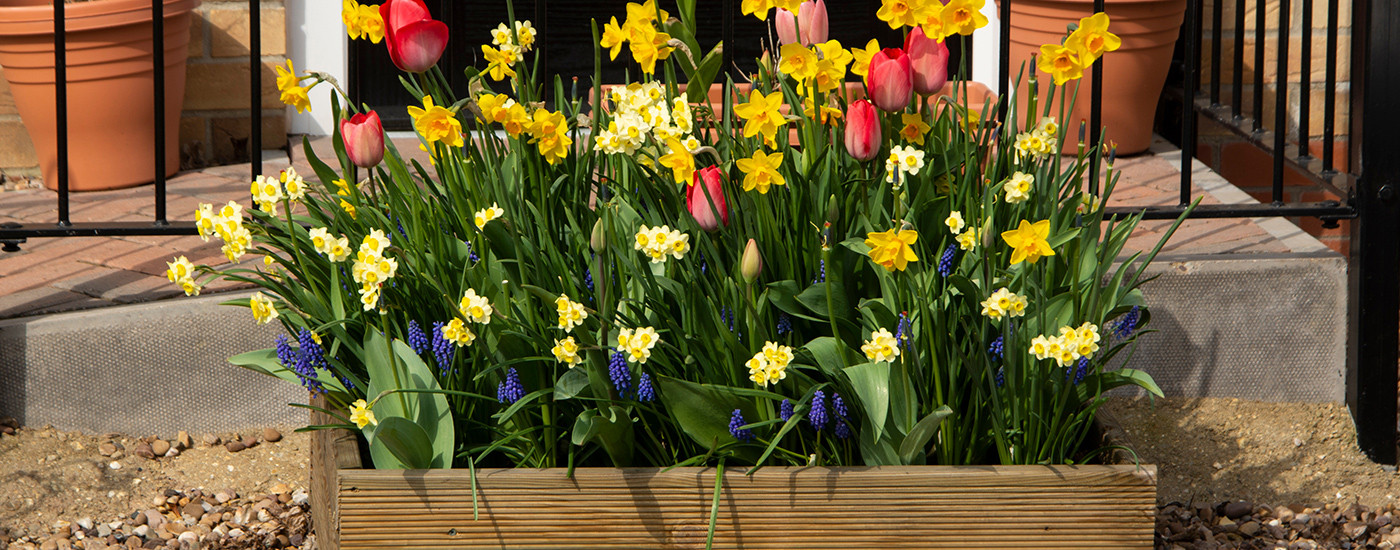Growing your own fruit, vegetables and plants makes both environmental and economic sense but isn’t always practical if you have a small garden or limited outdoor space. Planters are a great way to create fantastic floral displays in the absence of beds and borders and can be made easily from decking supplies you may have left over from another project. Making your own planters also means you can tailor them to fit awkward spaces that a shop bought planter may not fit into.
To make your own planters you will need decking boards or offcuts of boards, decking screws, a saw, a hammer and nails, empty compost bags or plastic black sacks (for lining the planter), an off cut of timber for the base, stones and compost. For a planter shallow enough to serve as a window box, a single decking board 32 x 150 x 1000 mm will provide enough depth and two of these boards will be sufficient for a planter 24” x 6” x 6”. For deeper planters, you will need to construct shallow planters first and stack them on top of each other, with the bottom one only requiring a base.
Once you have the required dimensions for your planter, you will need to saw the decking boards to size before screwing them together to create the shape of your planter. When creating a deeper planter, screw wooden batons in all four corners, to all the tiers of decking board, to secure the tiers to each other. This will make the planter more stable and allow you to move the entire piece without it separating. For the planter base, any off cut of timber of the correct size can be used, although timber that has been pressure treated will be resistant to rotting. This can be attached to the bottom of your planter with screws.
With the planter constructed, you now need to line it. Heavy-duty, plastic refuse sacks, or even empty compost bags, are ideal for this. Cut the plastic to size and line the planter, including the base, making sure the liner is pressed well into the corners to prevent it being pulled away from the planter once it is filled with compost and plants. Secure the liner with nails and trim the liner to below the level of the sides so it doesn’t show. Complete your lined planter by drilling several holes through the liner and base for drainage. Move your planter into position now as it may be too heavy to move once planted up and add a layer of small stones or gravel. You are now ready to add compost and plants!
Of course, if you are lacking either DIY skills, spare bits of timber or both, making your own planters may not be a practical solution. At Witham Timber, you will find a wide selection of garden planters manufactured from sustainably sourced timber, so whether you are looking for a hexagonal planter, a planter with integral lattice, an obelisk or even a cascade planter, you are sure to find something to suit your outdoor space.

